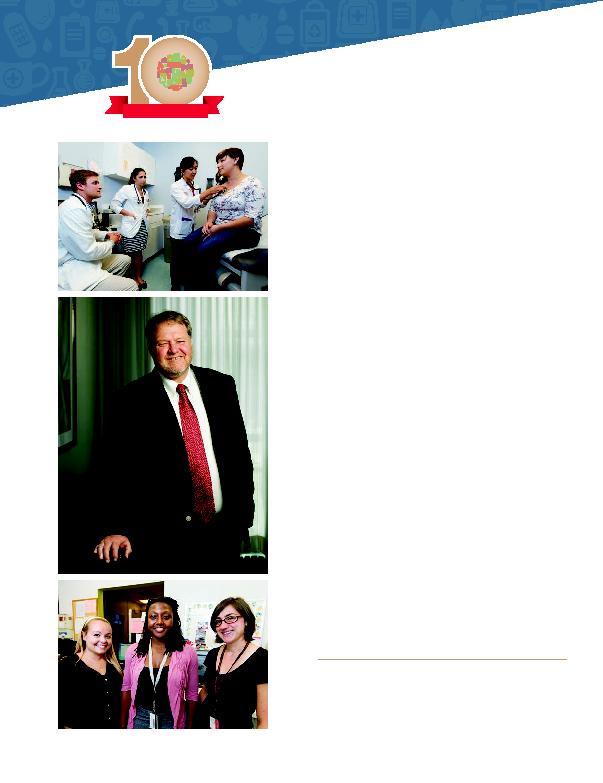
whelming."
of student-doctors is limited to 160--approximately 40
from each class--who comprise 40 student teams, with four
members on each team. Students are assigned to the same
team for four years. When they graduate, fourth-year stu-
dents are replaced by first-years, providing a longitudinal
model that encourages team spirit and ensures continuity of
care for the one or two patients assigned to the team.
associate professor of family medicine and community
health and assistant dean for global health. "They say, `If we
don't see them, who else will?' and they're always willing to
spend extra hours helping their patients navigate the chal-
lenges of our health care system."
care, says Stephanie Oh, a clinic director, who continues to
volunteer at the clinic while completing a combined
MD/PhD degree. "For a person with diabetes, the overriding
concerns might be shelter, transportation, and employment.
We learn to explain the importance of issues like good nutri-
tion and sleep hygiene--concerns that we take for granted
but that are also part of taking care of yourself."
any complaints, and take vital signs. They present to the
third- and fourth-year team members, who complete the
physical exam and then develop an assessment and treat-
ment plan, which they review with the faculty preceptor.
mentors to the student-doctor teams. Some have served for
years, coming every month to work with the students and
patients. The Department of Family Medicine and Com-
munity Health is strongly represented. Besides Dr. Lin, the
department's regular clinic preceptors include David Swee,
MD; Frances Wu, MD; and Euton Laing, MD '90. In addi-
tion, Iris Udasin, MD, professor of environmental and occu-
cine and community health, senior associate dean for community
health, and faculty adviser, HIPHOP-Promise Clinic.
Livingstone (center), and Suzanne Haggerty.